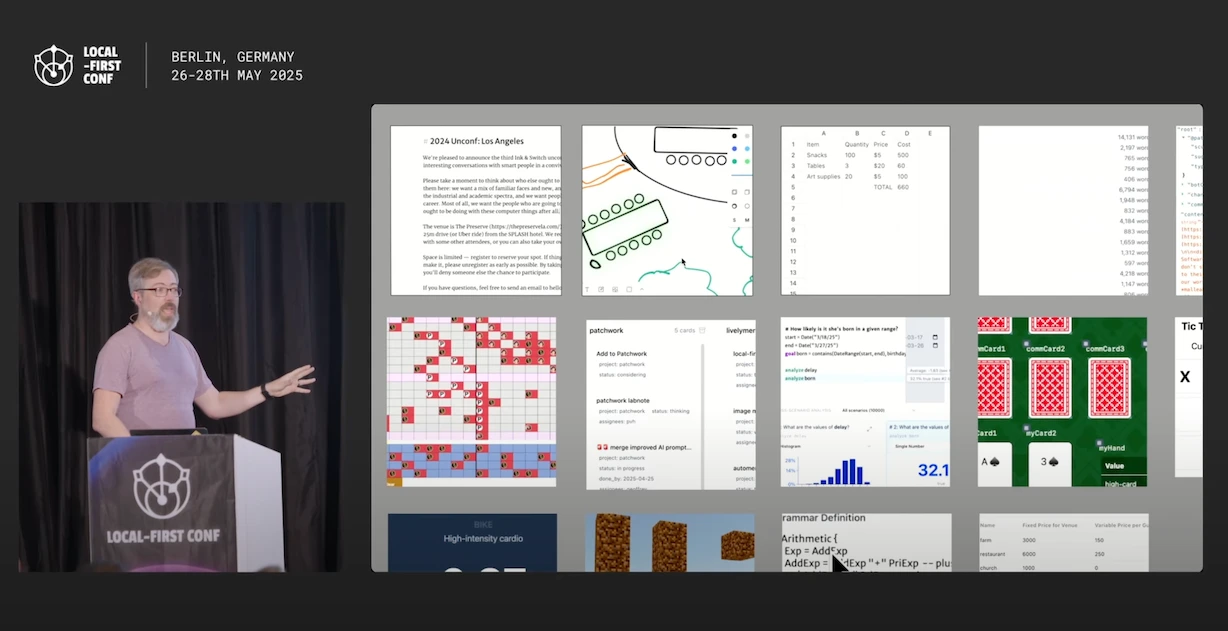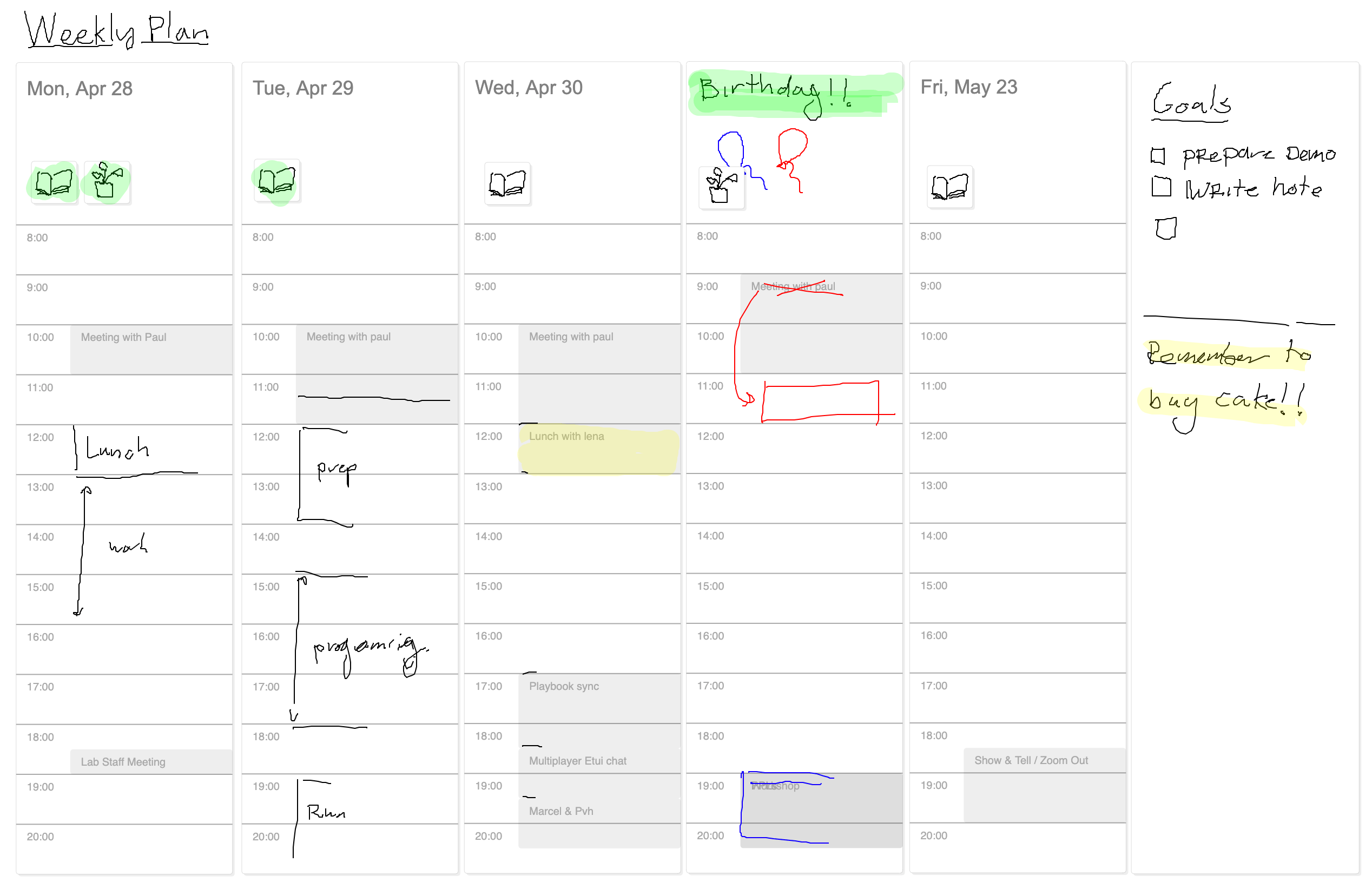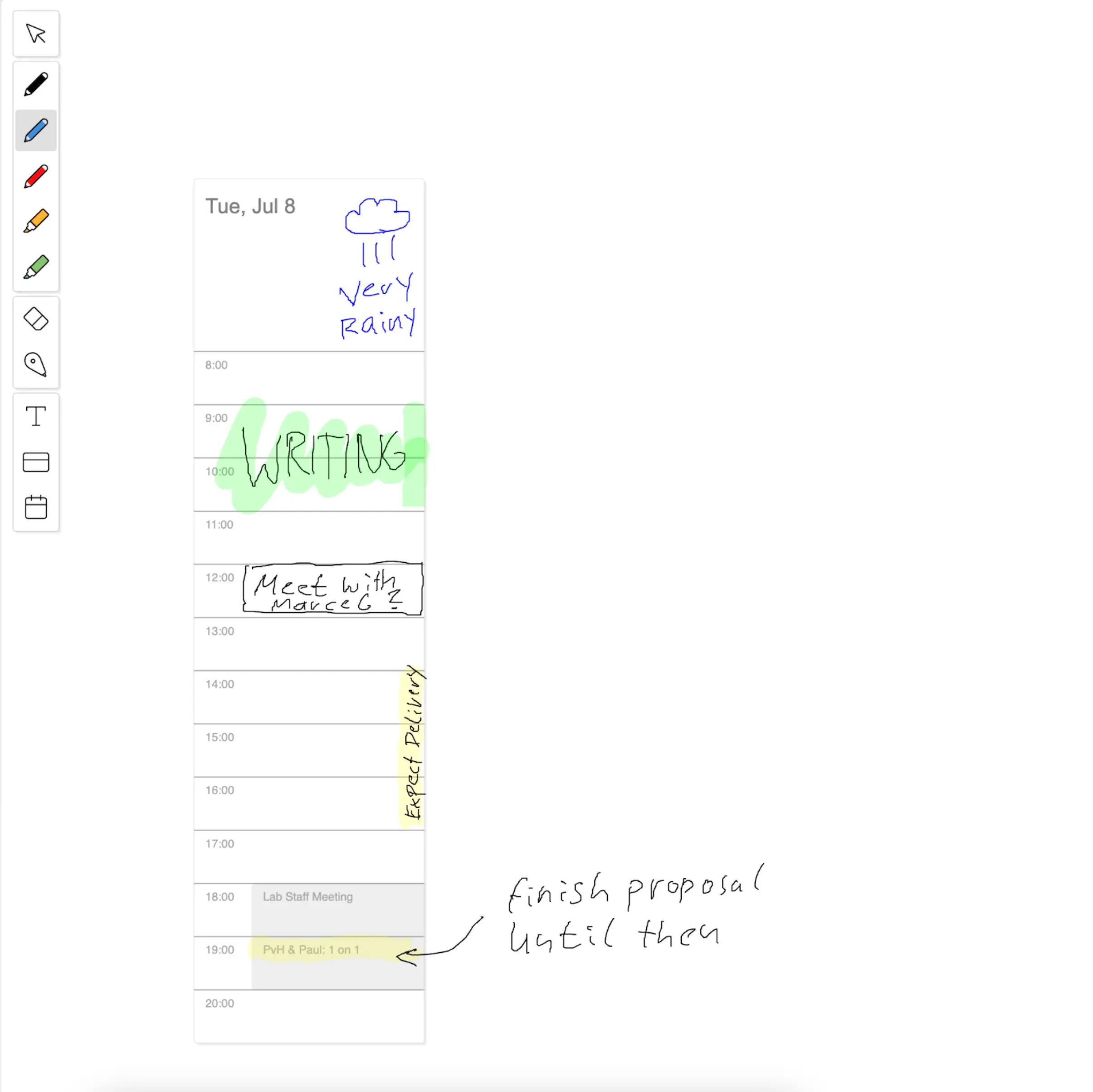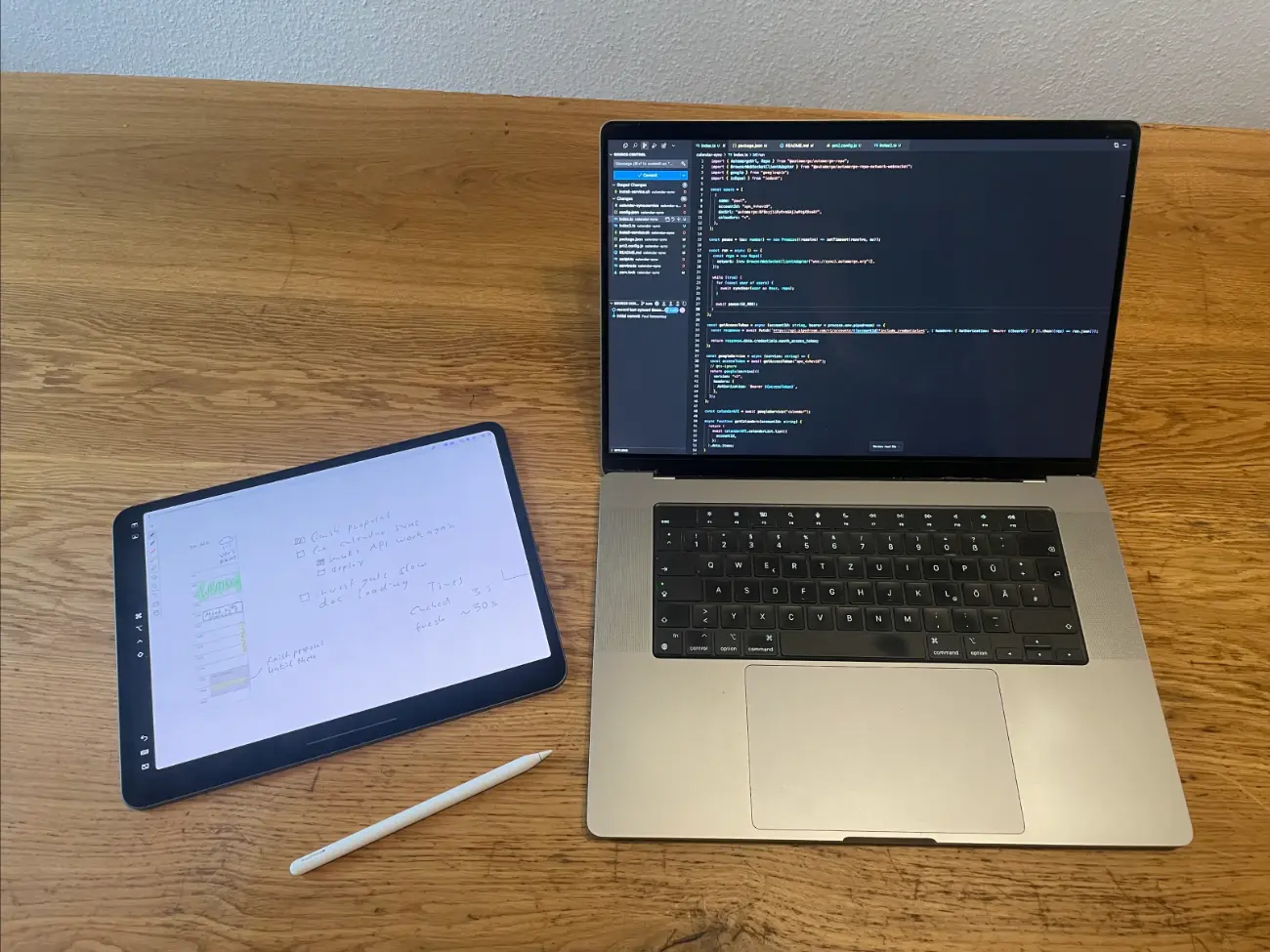Local-first talks, Automerge 3, and Scribbling on a Google Calendar
- July 2025
- Back to archive
We hope you’re having a great summer! In this newsletter, we’re sharing some recent conference talks, the official launch for Automerge 3, and some reflections on sketchy calendars.
Local First: the Secret Master Plan

The recording is up from lab director Peter van Hardenberg’s talk Local-first: the secret master plan, which he gave at Local-First Conf in May.
In the talk, Peter shares our vision for building collaboration tools on top of local-first infrastructure. You’ll see prototypes of universal version control and malleable software, and some new demos of the Patchwork collaboration environment that we use to do our own work inside the lab.
Automerge 3 is out!
Automerge is a local-first data sync engine that makes it easy to build collaborative apps. Today we’re excited to announce version 3.0 of Automerge.
The main update is a dramatic reduction in memory usage. Automerge stores the full history of documents to facilitate offline collaboration and version control workflows; in previous versions of the library, this could lead to gigabytes of memory usage when working with documents that had long histories. Now, in Automerge 3.0, we’ve cut that down memory usage by over 10x, sometimes dramatically more, making Automerge feasible to use in a much wider range of scenarios.
In addition to the memory usage improvements, we’ve also cleaned up some redundant APIs, particularly around the dealing with text strings.
If you’re using Automerge already, you should upgrade today. Automerge 3.0 uses the same file format as Automerge 2 and the API is nearly fully backwards compatible. See the migration guide for more details. If you’re not using Automerge yet, now’s a great time to take another look, as things have come a long way in performance and reliability.
To learn more about how we achieved these improvements, read our launch blog post.
Safe in the Keyhive
For the past year, our Automerge team has also been working on access control and end-to-end encryption. Recently, at Local-First Conf, Brooklyn Zelenka and Alex Good gave live updates on our progress. Check them out:
- Safe in the Keyhive: Local-first access control with E2EE and capabilities: Brooklyn Zelenka presented on building end-to-end encrypted access control for local-first applications.
- Beelay, a (reasonably) generic encrypted sync protocol for CRDTs: Alex Good discussed approaches for synchronizing end-to-end encrypted CRDTs, explaining the Beelay protocol developed as part of the Keyhive project.
Scribble on your Google Calendar
Here’s an update from our Sketchy Calendar project by Marcel Goethals and Paul Sonnentag. (You can also read this update on our website.)
Calendar apps and physical notebooks have very different vibes. Calendar apps are formal and visually uniform — just colored rectangles with titles that snap to a fixed grid. Notebooks have texture — you can use different pens and highlighters to mark and annotate however you want.
In our first prototype, we tried bringing both worlds together by starting with a digital notebook. We wanted to test whether the expressive freedom of pen and paper could coexist with synced digital events. The approach was to pull in your Google Calendar events as a static background layer, so you could sketch directly on top of them—circling important meetings, drawing arrows between tasks, or blocking out rough time estimates. Our goal was to preserve the iterative, flexible nature of notebook planning while still being able to see your scheduled events.

A digital notebook that allows you to scribble on top of your Google Calendar events
Here’s what we learned:
Sketching on your calendar feels liberating. Calendar apps force everything into uniform colored blocks, making it hard to distinguish critical meetings from your partner’s events that you just need to avoid scheduling over. Pen and highlighter are far more expressive - sketch tentative plans in gray, highlight time blocks, or jot quick notes without popups. When using sketchy calendar we found ourselves adding much more personal detail than in Google Calendar, capturing not just meetings but what we actually spent our time on.

Pens and markers are very expressive: you can block out time, sketch tentative events or annotate meetings.
It’s difficult to translate between the two worlds. When building this prototype we struggled with how formal events and scribbles should interact. Should sketched events sync back to Google Calendar? Sure, we can use text recognition on handwriting, but you’d lose the implicit meaning of color and style. And how do you translate a roughly sketched time range into a fixed start and end?
The reverse problem is equally tricky — if you draw an arrow pointing to an imported event that gets rescheduled, should the arrow automatically move? A simpler solution might be stopping auto-updates once you’ve drawn on the paper, and just indicating when underlying events have changed so users can update manually.
It’s useful to have a distinction between formal events and rough scribbles. In our prototype, Google Calendar events and hand-drawn scribbles remain quite separate. Initially we thought this was a problem, but there’s actually value in distinguishing between formal events with fixed times and loose sketchy plans. When meeting others, everyone needs to show up on time. But when planning for yourself, it doesn’t matter if you use personal shorthand that only makes sense to you in the moment. Our current prototype solves this by keeping scheduled events in Google Calendar and personal plans as scribbles. Even in a world everyone had automatically synchronized sketchy calendars, it’d still be useful to have distinction between formal and informal events.
It’s nice to have a dedicated device for daily planning. Sketchy calendar feels like a notebook open next to your computer — you can see upcoming events alongside daily todos at a single glance. Having that context in your physical space keeps you aware of your priorities without switching away from your work. Unlike a physical notebook, the events stay synced, so when someone reschedules a meeting in Google Calendar, it automatically appears in your sketchy calendar.

Sketchy Calendar allows you to keep track of your current task and upcoming events.
Even without solving all the complex interactions between sketches and formal events, keeping them clearly separate proved surprisingly effective. The simple model of importing calendar events as a background layer while keeping all annotations as personal scribbles felt natural and useful. Next, we want to explore how this approach scales—what happens when you need to flip between days, weeks, or plan across an entire year?
What’s another open tab?
- Designing Calm Technology: a short, classic read on ubiquitous computing, by Mark Weiser and John Seely Brown
- Enough AI copilots! We need AI HUDs: lab researcher Geoffrey Litt draws our attention to ambient user interfaces — think spellcheck — and implores us to explore beyond chat-based AI.
- Practical Local-First Software with Automerge: Lab director Peter van Hardenberg gave some demos of how to use the latest Automerge tools to build local-first software.
That’s all for now—until next time.